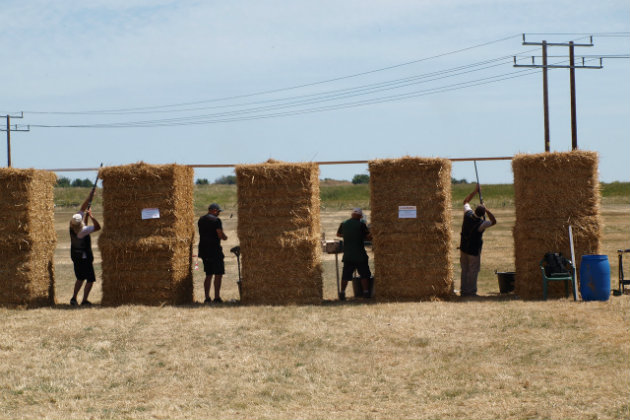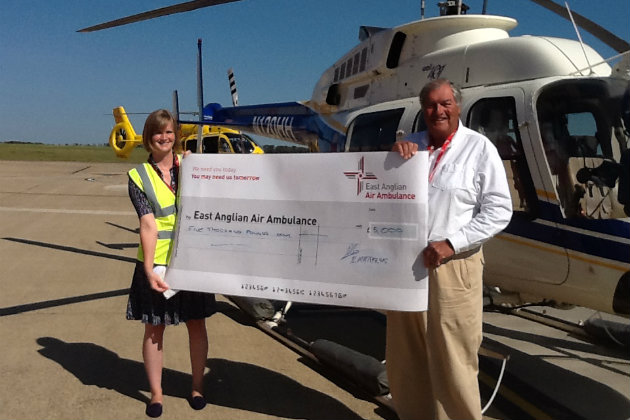Win CENS ProFlex DX5 earplugs worth £1,149 – enter here
22 important points you should know BEFORE organising a charity clay day

With thanks to the Clay Pigeon Shooting Association (CPSA) for its help in compiling this key advice.
- Get a Section 11(6) permission under the 1968 Firearms Act from your local police firearms department. This allows non-certificate holders to be in possession of ammunition and a shotgun under supervision. Most police authorities follow Clay Pigeon Shooting Association (CPSA) guidelines when issuing this certificate, either in permanent or temporary form, and may seek proof of insurance, existence of a risk assessment and the competence of those supervising. From the CPSA perspective that means a qualified instructor.
- Private events may take place in the landowner’s presence, provided he or she is a certificate holder.
- Any event with more than five people as employees (paid or not) must have a written risk assessment protocol in place beforehand. This will include such details as First Aid policies and will identify potential hazards. You will find a Government guide to risk assessments here.
- The land you intend to shoot over must also be in the control of the shoot organiser or they must have permission for shot fallout to land there.
- Insurance for a charity clay shoot is essential. Ensure you obtain third party liability cover for a minimum of £2,000,000 for any single accident. Shooting organisations will all be able to recommend specialist insurance brokers for this if your own insurer will not cover you.
- Talk to the neighbours, particularly if you are planning shooting on a Sunday or in the evening in an area where clays aren’t normally shot.
- On agricultural land activities such as shoots can be held on 28 days in any given year. Shoots in other areas, such as on a golf course or hotel, may require planning consent first. Check with your local planning office.
- For one- or two-trap shoots, a minimum area of 10 to 15 acres is required; larger shoots will need double the acreage. All spent shot and clays must fall into areas under the control of the shoot operator.
- The shooting area should have no public footpaths, bridleways and so on running through it.
- Proximity to housing, farm buildings and livestock should also be factored in, both for safety and noise considerations.
- The environmental health officer at your local council should be contacted to consider the likelihood of a noise nuisance.
- Publicise your clay day before and afterwards. If the event has raised thousands of pounds for a deserving cause, take a photo and write a brief press release including how much was raised for the charity or charities and how many people attended. Then send it to your local newspaper, radio or television station. Shooting Times also likes to receive reports like this and it’s worth sending details to your local MP for some good PR for the sport.
Charity clay days have raised thousands
- You can also set up a Facebook page to showcase the event.
- A charity day may be run on the strength of manual trappers; fully-automatic traps are not necessary. Safe siting (perhaps including shot barriers) is essential, as are preparatory work and a full tool kit. A system of red and green flags or radios will enable you to keep in contact with trappers.
- It is a sensible precaution to site shooters within a temporary enclosure, restricting their arc of fire. These can be made from any material, but straw bales may be helpful in reducing noise.
- All those within 20m of the firing position must wear eye and ear protection.
- The CPSA recommends an exclusion zone of at least 275m in each direction.
- Prepare warning posters advising that guns must be unloaded, broken or in sleeves unless on the firing point, and pointed down-range when on the firing point.
- Be aware of where your clays break. Encourage attendees to wear caps.
- Both for enjoyment and safety, try not to have shooters facing into the sun. Typically this means having them face north to north-east.
- Ensure all shooters and loaders empty ALL their pockets before tipping in fresh boxes of cartridges. 12/20-bore cartridge accidents can and do happen when loaders and Guns are distracted.
- Do check first that the charity for which you have chosen to raise funds is happy to be associated with your event. Some, particularly medical research charities, occasionally have genuine legitimate concerns at being associated not with clayshooting particularly, but occasionally with the game shoot behind it. Also determine whether the charity has the resources to offer you any practical assistance with organisation and advice on running the day. They may have invaluable experience and good ideas for local sponsors of your event.
Related Articles
Get the latest news delivered direct to your door
Subscribe to Shooting Times & Country
Discover the ultimate companion for field sports enthusiasts with Shooting Times & Country Magazine, the UK’s leading weekly publication that has been at the forefront of shooting culture since 1882. Subscribers gain access to expert tips, comprehensive gear reviews, seasonal advice and a vibrant community of like-minded shooters.
Save on shop price when you subscribe with weekly issues featuring in-depth articles on gundog training, exclusive member offers and access to the digital back issue library. A Shooting Times & Country subscription is more than a magazine, don’t just read about the countryside; immerse yourself in its most authoritative and engaging publication.








